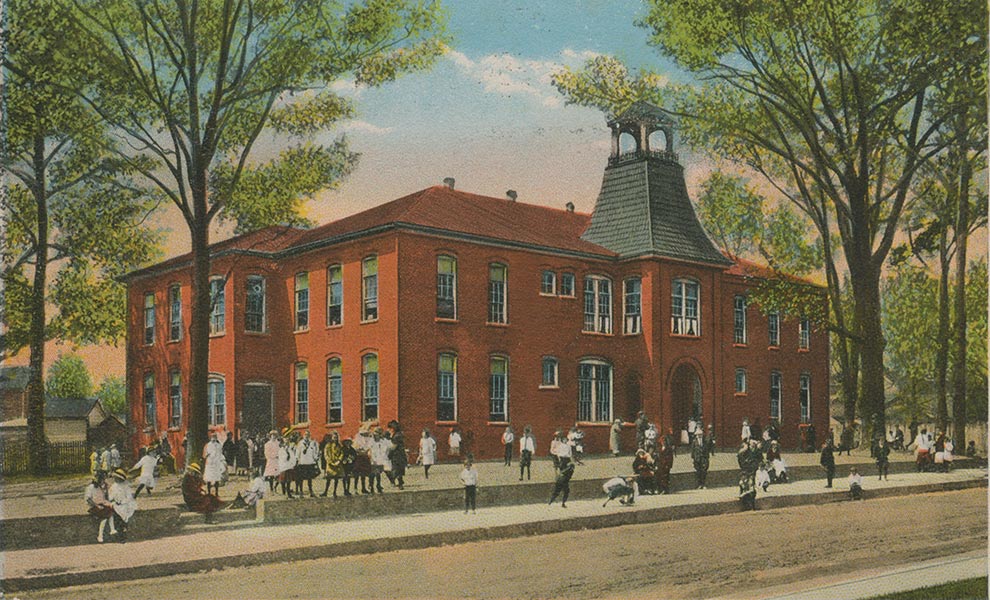
The beginnings of modern public education in Greenville trace back to the construction, in 1903, of the new graded school pictured here. Construction was funded by a municipal bond, approved by the state legislature for the sake of building new schools for both races. The Greenville graded school was one of the reportedly one thousand schools constructed during Governor Charles B. Aycock’s administration, 1901-1904.
An advocate of universal education, Aycock spoke continually on the need for more publicly funded schools. His educational agenda, broadcast far and wide, was an iconic expression of the progressive movement in North Carolina. It was, however, also tied to the implementation of Jim Crow racial segregation and the relative disenfranchisement of African-American men (women did not have the vote in the early twentieth century regardless of race). In Greenville, the new graded school pictured had its counterpart in west Greenville, where a far less grand facility, supervised by the newly hired Charles Montgomery Eppes, provided for public education for African-American school children. Thus, Greenville’s graded school, often referred to as the only one in Greenville, was the only white graded school.
Aycock’s agenda had a Greenville ally in former governor Thomas J. Jarvis, chairman of the Board of Trustees for Greenville Schools. With Jarvis as the driving force, the municipal bonds were marketed and construction of the school completed by November 1903. W. B. Dove of Reidsville was named its first principal. W. H. Ragsdale, who had run a private school, the Greenville Male Academy, on the site that came to be occupied by the new school, gave up his private academy to become the county superintendent of public education. Dedication ceremonies included a parade from the court house, which had previously been used as a temporary facility, to the new school on Evans Street. The 270 white children who were to attend the school were part of the procession. The school, built in four months, cost over $13,000. Dedication day was called Greenville’s proudest.
The new graded school facilitated Greenville’s rise to greater educational prominence a few years later when Ragsdale and Jarvis partnered again, first to secure legislation providing for East Carolina Teachers Training School, and then for the school’s location in Greenville. The new graded school of 1903 gave the small town and its lucrative tobacco market, momentum for achieving greater roles as an educational center for the state. The magnitude of Greenville’s progressive achievement was limited, however, by the racial divide that left the African-American population, despite appeals to separate but equal facilities, provided for, but at a shameful disadvantage. Both “the graded school” and ECTTS were, by charter, white facilities.
Sources
- “Graded School Greenville, N.C. View.” Digital Collections 275.1.d.10. J. Y. Joyner Library. East Carolina University. Greenville, N.C. https://digital.lib.ecu.edu/26.
- “Greenville Bond Fight.” News and Observer. February 14, 1903. P. 2.
- “Greenville graded school, Greenville, N.C.” Digital Collections 275.2b.d.158. J. Y. Joyner Library. East Carolina University. Greenville, N.C. https://digital.lib.ecu.edu/318.
- “Greenville’s Proudest Day.” Charlotte Observer. November 10, 1903. P. 1.
- “Prosperous Pitt County: Opening of Tobacco Market Aug. 3 Will Mark High Tide.” News and Observer. July 15, 1903. P. 1.
- “The New Graded Schools of Greenville.” The Morning Post (Raleigh). November 13, 1903. P. 4.
Citation Information
Title: The Greenville Graded School
Author: John A. Tucker, PhD
Date of Publication: 6/5/2018